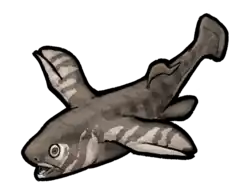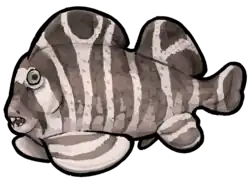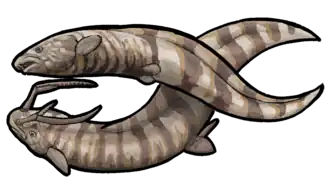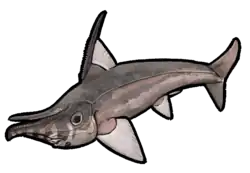Siksika ottae
| Siksika ottae Temporal range:
| |
|---|---|
| Scientific classification | |
| Kingdom: | Animalia |
| Phylum: | Chordata |
| Class: | Chondrichthyes |
| Subclass: | Holocephali |
| Order: | †Petalodontiformes |
| Family: | †Petalodontidae |
| Genus: | † Lund, 1989 |
| Species: | †S. ottae
|
| Binomial name | |
| †Siksika ottae Lund, 1989
| |
Siksika ottae is an extinct species of petalodont (a type of prehistoric cartilaginous fish), which lived during the Upper Mississippian. It has been discovered at the well known Carboniferous-aged Bear Gulch Limestone (Montana, United States). It is known primarily from fossil teeth, but also from partial neurocranium and mandibles which hint at a close relationship to coeval petalodontiforms such as Janassa and Netsepoye. Dentition is generally heterodont. Siksika translates to Blackfoot, being named after the Siksika Nation.
References
- Siksika ottae
- Blackfoot (Siksika) The Canadian Encyclopedia
- Richard Lund (1989). "New petalodonts (Chondrichthyes) from the Upper Mississippian Bear Gulch Limestone (Namurian E2b) of Montana". Journal of Vertebrate Paleontology. 9 (3): 350–368. doi:10.1080/02724634.1989.10011767. JSTOR 4523270.




